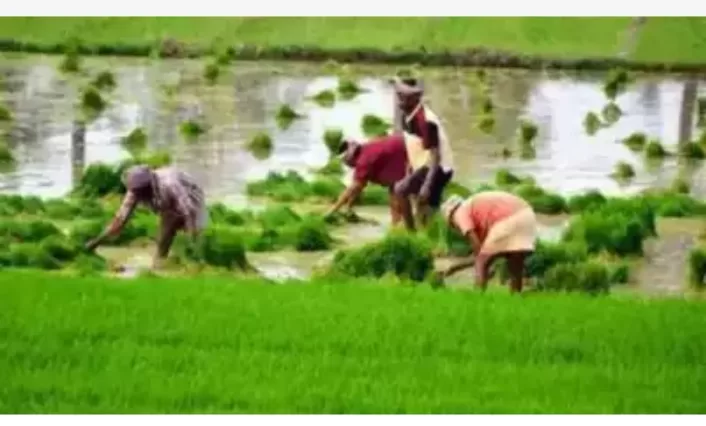New Delhi -Kharif sowing in India has exceeded last year’s levels, primarily due to a substantial increase in paddy cultivation, while pulses and oilseeds have experienced a decline. This comes at a time when the unpredictable southwest monsoon has cast uncertainties over this year’s sowing and harvest. According to data unveiled by the Ministry of Agriculture on Friday, total kharif planting until September 15th has surged by 3.6% compared to the previous year, reaching 109.5 million hectares (mh). Paddy cultivation has witnessed a remarkable ascent of 10.8% from last year, encompassing 40.9 mh, while pulses have declined by 6.6% to 12.1 mh. This includes a 2.6% dip in tur (pigeon pea or arhar) and a 0.7% decrease in urad (black gram), amounting to 4.3 mh and 3.2 mh, respectively.
The acreage allocated for oilseed cultivation has also experienced a decline, shrinking by 2.1% to 19.2 mh.
Within this context, groundnut sowing has reduced by 1.5% to 4.3 mh, and sunflower crop plantations have fallen by 1.3%, covering 700,000 hectares.
However, there has been an acceleration in soybean sowing, a major kharif crop, encompassing 12.6 mh, signifying a 1.3% increase from the previous year.
The sowing of coarse cereals has recorded a 1.6% rise, with maize sowing surging by 2.5% to 8.4 mh, while bajra has experienced a slight uptick, reaching 7.1 mh. However, jowar and ragi sowing has declined by 1.5% to 1.4 mh and 0.5% to 885,000 hectares, respectively.
Similarly, cotton crop plantation has dipped by 4.1% to 12.3 mh. In contrast, sugarcane sowing has registered an increase of 4.3%, reaching nearly 6 mh.
Despite an improvement in nationwide rainfall during the past week compared to the driest monsoon month in 122 years, the cumulative rainfall is still lagging by 9%, standing at 723.2 mm until September 15th since the onset of monsoon on June 1st.
The June-September monsoon season plays a pivotal role in India’s economy, contributing significantly to its $3 trillion GDP. It accounts for nearly 75% of the country’s annual rainfall, which is vital for agriculture, replenishing reservoirs and aquifers, and meeting power demand. More than half of India’s arable land relies on rainfall for irrigation, making agriculture one of the primary sources of employment.
Although there has been an improvement in major reservoir levels during the past week, they still lag behind, currently standing at 23% below the previous year’s levels and 12% lower than the 10-year average.
As of Thursday, the deficit has narrowed by 3% compared to the previous week.
For the agriculture sector, higher water levels are crucial, as farmers heavily rely on reservoirs for irrigation. Data from the Central Water Commission (CWC) reveals that water levels in 150 reservoirs currently stand at 117.699 billion cubic meters (bcm), equivalent to 66% of their overall capacity. While there has been a marginal uptick since the previous week, these levels remain lower than the corresponding period in the previous year and the 10-year average. The CWC report highlights that storage in the 150 reservoirs presently represents 77% of last year’s storage for the same period and 88% of the 10-year average.
In essence, while paddy cultivation has bolstered kharif acreage, challenges persist in other crop categories, influenced by the unpredictable monsoon patterns.







